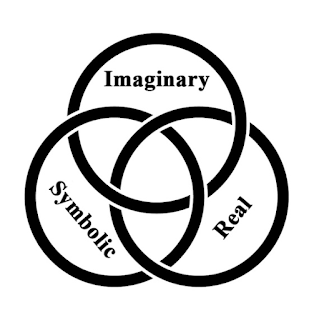Jaques Lacan
Lacans Theory
Lacans theory begins with infancy; as an infant, we as humans are in a mirror stage but by the 1950's, Lacan no longer saw the mirror stage as a moment in the infants life, more as a representation of a permanent structure of subjectivity. The mirror stage is the persons identification with their own image, Lacan calls this the "ideal-I or ideal ego, forming an ideal self image of themselves in their head. Cinema may function as a mirror to the audience in the same way, forming an ideal self image rather than allowing us to focus on who we really are.
Lacans psychoanalysis contains a three part system consisting of imaginary, symbolic and real- these put together are what forms a persons sense of self awareness. The imaginary is where the person creates fantasies of both themselves and the object of their desires. The symbolic is developed through our societies culture and language. Where as the real is mostly consistent of our senses.
Lacan suggests that we create unrealistic fantasies due to the fact that once we achieve our goals set out in our fantasies we do not feel contempt, he says that the fantasy itself is more enjoyable than achieving our goals set by said fantasy. The mirror stage is hugely important to a childs development because prior to the mirror stage, the infant only identifies themselves as body parts, after the critical point of self identification (in a mirror) this makes the child feel whole. Contrasting to the childs new found sense of wholeness, the child now develops a conflict with the identification gained from their reflection, creating lack, the child isnt satisfied with their self image, making them try all the way through their life to find something to fulfil them.


Comments
Post a Comment